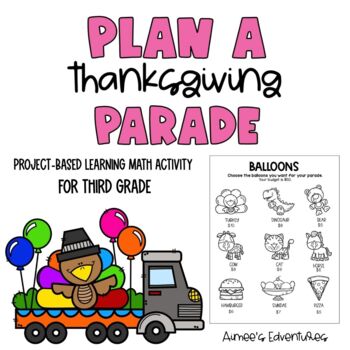PBL Math Project | Plan the Thanksgiving Day Parade | Real World Math
- PDF
What educators are saying
Also included in
- Thanksgiving time isn’t just about feasting and giving thanks - it’s also a great opportunity to get your kids learning and having fun. Our 9 language arts language arts and math activities for Thanksgiving is the perfect way to do that! Using engaging worksheets, exciting afеѕtivitiеѕ, and fun andPrice $36.00Original Price $43.00Save $7.00
Description
Let your students take part in an American tradition with the Macy’s Thanksgiving Day Parade math project. This set of real world math activities puts a unique spin on math learning, solving problems and staying within a budget with a fun and engaging parade theme. Children can use 3rd Grade Common Core content to fill their parade with the most colorful floats and exciting balloons while practicing important math skills.
These menus provide students with the opportunity to apply their math skills to the parade planning process. They’ll get to choose their parade city, the broadcast range, and the length of the parade. Plus students can pick from parade balloons priced between $5-10 with a budget of $50. They’ll even get to solve problems to determine how many employees to hire and design their own float.
Macy’s Thanksgiving Day Parade math menus create an exciting hands-on learning experience and lets your students take part in a beloved American tradition. With this fun and educational resource, they’ll gain valuable math skills while creating their own parade of fun and excitement.






